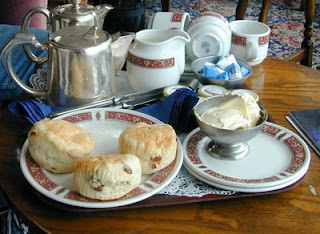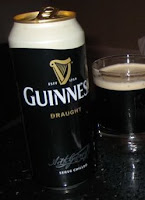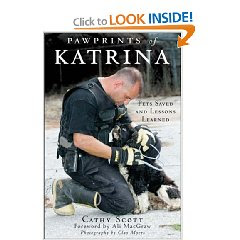
 hippocampus — the amygdala’s next-door neighbor that controls learning and recall (memory). It essentially dampens the sort of creativity we need to develop unique ideas and write beautiful sentences.
hippocampus — the amygdala’s next-door neighbor that controls learning and recall (memory). It essentially dampens the sort of creativity we need to develop unique ideas and write beautiful sentences.
A Strategic Communications Consultancy
Charlie Fern Ink, LLC, is a strategic communications consultancy that provides services including public relations and publicity, tour and media management, strategic message development and deployment, media relations and media training, executive coaching, speech writing and public speaking coaching, event planning, social media strategy; cross-platform branding, and professional writing and editing with areas of expertise that include international relations, business, and diplomacy; government, education, non-profit/advocacy, music and entertainment, healthcare, biotech, technology, social media, entrepreneurial/startup and general professional communications.

 hippocampus — the amygdala’s next-door neighbor that controls learning and recall (memory). It essentially dampens the sort of creativity we need to develop unique ideas and write beautiful sentences.
hippocampus — the amygdala’s next-door neighbor that controls learning and recall (memory). It essentially dampens the sort of creativity we need to develop unique ideas and write beautiful sentences.
 Well, I’ve been tagged in a “meme”– which, according to my tagger, is something like a blog version of those “getting to know you” e-mails that find their way to my in-box on occasion.
Well, I’ve been tagged in a “meme”– which, according to my tagger, is something like a blog version of those “getting to know you” e-mails that find their way to my in-box on occasion.
Unlike that damn redhead, Stacy Lukas who tagged me, I had no idea what a “meme” was, nor what volunteering that information would mean for my free time over the next day or two. But, as she promised in her own blog, it’s relatively simple: I’m supposed to list seven random things about myself for your enjoyment and/or education. With out further ado:
out further ado:
1) I am a hopeless Anglophile, from the top of my red head to the bottom of my pale and freckled feet. My love for Great Britain is an incurable disease that takes stronger h old with my every exposure. I suspect that it has something to do with lineage: They are my people. I am of English, Irish, and Scottish descent (from England’s Portsmouth, Ireland’s Loch Conn, and unknown parts of Scotland) It’s also been rumored that we are descendants of Lord William Canning, and we have a family crest that my cousins swear is older than QVC. I adore the British people. I love the food of England (including and especially the cheeses, clotted cream and “Extermely Ch
old with my every exposure. I suspect that it has something to do with lineage: They are my people. I am of English, Irish, and Scottish descent (from England’s Portsmouth, Ireland’s Loch Conn, and unknown parts of Scotland) It’s also been rumored that we are descendants of Lord William Canning, and we have a family crest that my cousins swear is older than QVC. I adore the British people. I love the food of England (including and especially the cheeses, clotted cream and “Extermely Ch ocolatey Mini Bites”). And oh, how I love Guinness. I also find something sacred and powerfully comforting about the British tradition of tea. It is my religion. I love that I blend in with everyone on the beaches of Cornwall: nearly all of us day-glo white and freckled with red blotches where we missed with the sunscreen. And I love the wildlife. Ravens, magpies, seagulls; even rabbits. Once, when I was walking along the Hayle Towans (grass-covered dunes) with my friend Sarah, we happened upon a coven or two of rabbits. I squealed with delight at the spectacle of dozens of long ears disappearing down rabbit holes. As I stood there taking it all in, Sarah shook her head in dismay. “We eat them, you know,” she said, smiling wryly. I know better — I’ve seen them immortalized in art. The only thing I don’t like about England is leaving it. Look out, Bill Bryson. I could take you for the Anglophile title.
ocolatey Mini Bites”). And oh, how I love Guinness. I also find something sacred and powerfully comforting about the British tradition of tea. It is my religion. I love that I blend in with everyone on the beaches of Cornwall: nearly all of us day-glo white and freckled with red blotches where we missed with the sunscreen. And I love the wildlife. Ravens, magpies, seagulls; even rabbits. Once, when I was walking along the Hayle Towans (grass-covered dunes) with my friend Sarah, we happened upon a coven or two of rabbits. I squealed with delight at the spectacle of dozens of long ears disappearing down rabbit holes. As I stood there taking it all in, Sarah shook her head in dismay. “We eat them, you know,” she said, smiling wryly. I know better — I’ve seen them immortalized in art. The only thing I don’t like about England is leaving it. Look out, Bill Bryson. I could take you for the Anglophile title.
2) I am nicknamed after my great-uncle, Charlie Fern. He was a fascinating caricature of a man; a pioneering aviator (barnstormer) and journalist (a self-proclaimed “UPI man”) in Hawaii, who worked his way up to owner and publisher of the Garden Isle.  A problem with the fuel gauge on his twin-engine “Jenny” led to his becoming the first man to fly a plane round-trip in the Hawaiian islands. I’ve found few writings about him that didn’t include adjectives like “talented”, “daring”, and “legendary”. Uncle Charlie was responsible for developing my love of letters and of writing. My nom de plume and company name isn’t just a tribute to this personal hero; it is a legacy that I continually strive to honor in my own life and profession. It is also a daily reminder that you cannot live a large and honorable life without taking risks and maintaining integrity. A bittersweet asterisk: The man who knows the most about Uncle Charlie’s life is his son Charles Jr. (who goes by Mike), whom I have never met because my family lost track of him. They claim he is a recluse (and a genius). I know very little about Mike, except that he’s about 85 and he lives somewhere in Orange County. And he is the guardian of the remainder of details about the life of one of the greatest men I’ve ever known.
A problem with the fuel gauge on his twin-engine “Jenny” led to his becoming the first man to fly a plane round-trip in the Hawaiian islands. I’ve found few writings about him that didn’t include adjectives like “talented”, “daring”, and “legendary”. Uncle Charlie was responsible for developing my love of letters and of writing. My nom de plume and company name isn’t just a tribute to this personal hero; it is a legacy that I continually strive to honor in my own life and profession. It is also a daily reminder that you cannot live a large and honorable life without taking risks and maintaining integrity. A bittersweet asterisk: The man who knows the most about Uncle Charlie’s life is his son Charles Jr. (who goes by Mike), whom I have never met because my family lost track of him. They claim he is a recluse (and a genius). I know very little about Mike, except that he’s about 85 and he lives somewhere in Orange County. And he is the guardian of the remainder of details about the life of one of the greatest men I’ve ever known.
3) I have an irrational fear of bridges, especially tall ones. I will bring a car to a screeching halt on the shoulder of a road that presents a sudden and unexpected bridge ahead. I am terrified of the Delaware Memorial Bridge (or DEL MEM BR, as the sign says), and I am physically unable to drive over the Golden Gate Bridge and the bridge that leads into Newport, Rhode Island. So, if you’re ever caught on a road trip and I’m behind the wheel, I suggest you check the map and make sure you know what’s ahead.
Bridge (or DEL MEM BR, as the sign says), and I am physically unable to drive over the Golden Gate Bridge and the bridge that leads into Newport, Rhode Island. So, if you’re ever caught on a road trip and I’m behind the wheel, I suggest you check the map and make sure you know what’s ahead.
4) I love olives — especially fancy name-brand pitted black olives. I have loved olives since I was a child, and I have been known to eat an entire can in one sitting. In my family, it was a Thanksgiving tradition to set a bowl of black olives out on the dinner table. And traditionally, they never lasted till dinner if there were any kids around. It was one of life’s early pleasures, popping an olive over the tip of each finger, wiggling them, and eating them. And many a Christmas stocking was stuffed with a can of olives for me. Mine, all mine.
since I was a child, and I have been known to eat an entire can in one sitting. In my family, it was a Thanksgiving tradition to set a bowl of black olives out on the dinner table. And traditionally, they never lasted till dinner if there were any kids around. It was one of life’s early pleasures, popping an olive over the tip of each finger, wiggling them, and eating them. And many a Christmas stocking was stuffed with a can of olives for me. Mine, all mine.
5) I sang a duet with Fred Rogers (as in Mr. Rogers Neighborhood) on April 3, 2002. I was staffing an event in the East Wing — The White House Conference on Early Childhood Education. Mr. Rogers was one of the guest speakers. I should insert here that I have met, and worked for, a lot of very famous people. By that point in my tenure at the White House, I was fairly numb to the celebrity effect. So it is somewhat embarrassing to say that of all the big-name people I’v e encountered in my life, it was Fred Rogers who reduced me to a giddy kid who could hardly find her voice upon meeting him. He’s just exactly as the world saw him on television: Warm, kind, attentive, sincere.
e encountered in my life, it was Fred Rogers who reduced me to a giddy kid who could hardly find her voice upon meeting him. He’s just exactly as the world saw him on television: Warm, kind, attentive, sincere.
I shook his hand after the event and told him (babbled, actually) that when I was a kid, I didn’t much care for his show, but I had grown to appreciate him (and his music) as an adult. I often called my grown-up friends and sang “It’s Such a Good Feeling” to them — in fact, a friend and I had worked out a little stage routine to the song. His face lit up and he said, “Why don’t we sing it together?” I was utterly stunned. This was an opportunity I simply could not refuse, but I risked being fired for upsetting the program to accommodate him. Yet he insisted, and hnd his “handler” (manager) agreed.
Once all the guests from the conference were seated in the dining room for lunch, Fred Rogers excused himself from the room. He walked out to the main corridor on the first floor of the White House, where the Marine Corps band was playing. Mr. Rogers and I were alone there except for the musicians and one or two staffers. He walked up to the White House Steinway piano – the o ne with golden eagles for legs – and asked the Marine who had just finished playing a song on it if he (Fred Rogers) might sit down and play a song. The Marine promptly and cheerfully obliged. Mr. Rogers signaled me over. He started to play “It’s Such a Good Feeling,” and I couldn’t believe what a magnificent pianist he was. He rolled across the keyboard with exquisite grace and started to sing. He looked at me expectantly. When I could find my voice, I squeaked along with him. By the end of the song, I had tears running down my face. Yep. It was such a good feeling. A month or two later, I received a package in the mail. It contained an autographed picture (he’d also written a bar of notes from the song on it) and his entire collection of CDs (which I play for my 3-year-old son on a regular basis). Funny how one of the pinnacles of my career had nothing to do with speechwriting.
ne with golden eagles for legs – and asked the Marine who had just finished playing a song on it if he (Fred Rogers) might sit down and play a song. The Marine promptly and cheerfully obliged. Mr. Rogers signaled me over. He started to play “It’s Such a Good Feeling,” and I couldn’t believe what a magnificent pianist he was. He rolled across the keyboard with exquisite grace and started to sing. He looked at me expectantly. When I could find my voice, I squeaked along with him. By the end of the song, I had tears running down my face. Yep. It was such a good feeling. A month or two later, I received a package in the mail. It contained an autographed picture (he’d also written a bar of notes from the song on it) and his entire collection of CDs (which I play for my 3-year-old son on a regular basis). Funny how one of the pinnacles of my career had nothing to do with speechwriting.
6) I nearly lit a man on fire on April 23, 2001. It happened when I was a White House speechwriter. One morning my boss, the head speechwriter for the President, brought around a man in a nice suit. I was deeply focused on an article I was reading. They appeared at my office door and I wheeled around in time to hear my boss introduce him. I know—at least I think I know – I heard “Josh Bolten,” but as I stood up and stuck out my hand, I said “Hi John.”
I was swiftly corrected. My boss explained to Josh that I was the First Lady’s speechwriter. Josh’s expression conveyed a mental filing of information that made me uneasy. As I held his steel grip in my handshake, I realized that his sleeve was dangling perilously above the open flame of a candle I had lit on my desk. Bolton, who must’ve felt the heat, looked down and asked me what the “altar” was for. My boss, who had been standing silently in the doorway, shifted uncomfortably.
I stammered that the painters had just finished our offices and the candle was ridding the room of the paint smell. They were halfway down the hall as my voice trailed off…I picked up our office staff directory. I thumbed over to the section marked “Chief of Staff”. There it was: Third person from the top. Josh Bolten. Assistant to the President and Deputy Chief of Staff of Policy. I’d just met the fourth most powerful man in the White House, got his name wrong, and nearly lit his suit on fire.
7) I know The Number One place to watch Marine One take off from the White House Grounds without getting shot by the secret service. It’s from the Old Executive Offic e Building; specifically, on a narrow ledge just outside a window in a top-floor hallway near the library. I and two colleagues found this spot when we worked in that building. I’m fairly certain you won’t be shot, because when we were watching a departure one morning from that very spot, I noticed two pairs of binoculars pointed at me — by two secret service guys on the roof of the White House. We waved. They waved back. I lived to tell the story.
e Building; specifically, on a narrow ledge just outside a window in a top-floor hallway near the library. I and two colleagues found this spot when we worked in that building. I’m fairly certain you won’t be shot, because when we were watching a departure one morning from that very spot, I noticed two pairs of binoculars pointed at me — by two secret service guys on the roof of the White House. We waved. They waved back. I lived to tell the story.
1. Beth Zesinis (@avenuez)
2. Cathy Scott (@cathyscott)
3. Dr. Ellen Weber (@ellenfweber)
4. Joel Bass (@joelbass)
5. Diane L. Harris (@DianeLHarris)
6. Nichole Brown (@Napril1023)
7. John C. Kim (@JKimLosangeles)
I don’t know some of these poor unsuspecting characters, but they seem like fascinating people based on our Twitter conversations. Anyway, that’s the point, isn’t it — to get to know them better by their blogs?
Here are the rules:
* Link your original tagger(s), and list these rules on your blog.
* Share seven facts about yourself in the post – some random, some weird.
* Tag seven people at the end of your post by leaving their names and the links to their blogs.
* Let them know they’ve been tagged by leaving a comment on their blogs and/or Twitter.
A couple months ago I attended a TPRA seminar on social networking and was astonished to learn that I had been asleep for the past 25 years and missed a technological revolution. Apparently that revolution has produced a new social order in which people can communicate with anyone, anywhere across the world instantly — the opportunities are limitless! — except for one oddly arbitrary rule. Each communication must be limited to 140 characters or less if you plan to do it by way of a funky new service called Twitter.
I know when I’m beat. I am an old-school communicator who, this spring, will be teaching college students with attention spans likely limited to what happened four score and seven tweets ago. I had no choice but to join the social experiment.
Armed with my pages of notes from the PR seminar (thanks to presenters such as Connie Reece, Brooks Bennett, Will Hampton, Robert Quigley and others for the insights), I set out to join the 21st Century and enjoy some of the rights and privileges that the technological revolution might afford me.
 Arbitrary rules aside, it’s a fascinating thing, this Twitter. Connie Reece describe it well. It’s essentially the top line from Facebook – “What are you doing now?” – shared in an open forum.
Arbitrary rules aside, it’s a fascinating thing, this Twitter. Connie Reece describe it well. It’s essentially the top line from Facebook – “What are you doing now?” – shared in an open forum.
At first, I was perplexed about the 140-character limit (characters, not words).
I’ve learned things. I posed random questions to complete strangers and received prompt responses from experts in their fields — in some cases leading professionals and/or company CEOs, entrepreneurs, and peers in my profession.
If you do some research or use Titter’s innovative MrTweet, you can find them all here: CEOs. Marketing VPs. Ad executives and professionals like @napril1023. Comedians. Writers who think, like Valeria Malton and (love this one) Canada’s “MenwithPens”. High-tech entrepreneurs. Neuroscientists! Poets. Free-lance writers, like funny Avenue Z. Government employees. Retired military officers. Musicians. Thought/community leaders like Entregreeneur Bradley Hughes. Journalists. Pundits. Gossip-scientists (?!) like “Cheeky Geeky”. Techno-wizards. Moms and dads. Published authors like Cathy Scott. Friends and former colleagues. And they’re generally well-behaved people.
I started exploring networks – hopping from one person to the next, following leads down blind alleys to unknown destinations around the world. One person has the potential of leading to a thousand (or more) others. And every person worth following, I’ve found, has readily available information to scan and determine what’s personally relevant. Click on names and see their bios, read their micro-blogs on Twitter, or follow links to their websites and full-on blogs. If you like what you see, you can choose to “follow” them — which means you receive their micro-blog updates and you can engage them in conversations.
Cool.
You can follow organizations, as well, for other relevant updates. I follow Starbucks (coffee achiever that I am), and the Times Online (for fantastic headlines and links to stories from the London paper), The Austin American-Statesman, and the Prime Minister of England’s office, just for giggles. You can even follow London’s Tower Bridge, which Tweets when it opens and closes for boats on the Thames (rather dull, for the most part, but probably handy for captains).
I’ve read more articles related to my profession in a month than I would have otherwise in six. I’ve downloaded comics, and pictures, and intriguing quotes, like this one by one Kimberly Bock: “Poetry. Fantasy that drips from the breast of naked thought.”
Of course there isn’t just one technological answer to life’s many questions and pursuits. But, consider this — although one person cannot be all things to all people, one person can harness the power of Twitter to get a whole lot of value from a whole lot of people in a relatively short amount of time. For free. And with limited advertising. Hallelujah!
T witter is an experiment with no boundaries, with each participant serving as a catalyst that produces energy and fuels other reactions with an unknown end-product (and lots of interesting by-products). I suspect that many of the people who use Twitter have a shared sense that something beyond the confines of everyday living — beyond expectations, even — is unfolding before our eyes.
witter is an experiment with no boundaries, with each participant serving as a catalyst that produces energy and fuels other reactions with an unknown end-product (and lots of interesting by-products). I suspect that many of the people who use Twitter have a shared sense that something beyond the confines of everyday living — beyond expectations, even — is unfolding before our eyes.
Through Twitter, people are forming new global societies that rise above our own communities, cultures, values and ideals — complete with self-generated, make-as-you-go rules of etiquette and human interaction (taught patiently to amateurs by more experienced users). It is, I imagine, what the original founder of the World Wide Web imagined the World Wide Web ought to be. For now, anyway.
Cottage industries are flourishing around it, too. You can find Twitter wikis, widgets, gadgets, decks, bloggers, backgrounds, search engines, instructors, mentors, ranking systems and – oh, so much more on the horizon. It’s mind-boggling to think how fast this budding form of communication has moved people and enterprises (and, sadly, the more seedy parasites and troglodytes that we’d like to sluff off the world’s underbelly).
In the end — a brilliant twist, if you ask me — it seems that Twitter is what you make it. You get out what you put into this nifty tool. That means you have to invest some time and energy if you want the effort to pay off. And, if you want to realize some value, you have to add some value.
As “JKimLosAngeles” Tweeted (said) recently, “I now look forward to checking Twitter more than Facebook everyday. Feel like I am evolving.”
He’s not the only one. I will say that as useful as Twitter is, it is also rather addictive. Someone may have to write a 12-step program for folks like JKim and me. The other day someone asked how you know you’re addicted to Twitter, and I got my answer from a friend (sorry for bringing this up again, dude).
I was on iChat with him, kidding around about getting more information from Twitter that I did from my own friends. He shot back, “We try to tell you stuff, but you say ‘Shhh! I’m Twittering with John Cleese now!'” I howled. Seconds later, I was retyping that line in a Tweet. (For the record, I don’t Twitter with John Cleese, much as I’d like to.)
Hats off to the guys who dreamed this one up while I was sleeping away the technological revolution. Twitter is not only fun, it’s also got a heck of a lot of potential to become something truly meaningful.
First, I’ll need a good recipe for mayonnaise. For that, I turn to my favorite Food Network chef and alchemist, Alton Brown. Following is a recipe of Alton’s from the Food Network. A word of caution before you embark on this endeavor — use the freshest, most disease-free eggs you can find when you make your own mayonnaise. Uncooked substances like egg yolks in mayo can have lots of nasty gastrointestinal side-effects.
Ingredients
* 1 egg yolk*
* 1/2 teaspoon fine salt
* 1/2 teaspoon dry mustard
* 2 pinches sugar
* 2 teaspoons fresh squeezed lemon juice
* 1 tablespoon white wine vinegar
* 1 cup oil, safflower or corn
Directions
In a glass bowl, whisk together egg yolk and dry ingredients. Combine lemon juice and vinegar in a separate bowl then thoroughly whisk half into the yolk mixture. Start whisking briskly, then start adding the oil a few drops at a time until the liquid seems to thicken and lighten a bit, (which means you’ve got an emulsion on your hands). Once you reach that point you can relax your arm a little (but just a little) and increase the oil flow to a constant (albeit thin) stream. Once half of the oil is in add the rest of the lemon juice mixture.
Continue whisking until all of the oil is incorporated. Leave at room temperature for 1 to 2 hours then refrigerate for up to 1 week.

My longtime friend Cathy Scott, who is a journalist, college professor, and acclaimed author (check out her latest book, Pawprints of Katrina, on Amazon.com) wrote a good blog today — a not-so-distant look back at competitive news coverage.
 To popcorn, or not to popcorn, that is the question;
To popcorn, or not to popcorn, that is the question;
 If you find the humor in these mouthy little aliens carrying off a garden gnome, then you’ll probably like some of the other clever items in the Wireless Catalog and its sister, Signals, both of which are loaded with self-proclaimed “Gifts that Inspire, Enlighten, and Entertain.”
If you find the humor in these mouthy little aliens carrying off a garden gnome, then you’ll probably like some of the other clever items in the Wireless Catalog and its sister, Signals, both of which are loaded with self-proclaimed “Gifts that Inspire, Enlighten, and Entertain.”



 In this country, tradition is king on Thanksgiving Day, but in my house, I’m plotting a coup, with a flabergastingly yummy new dish featuring a canned staple that I have only recently encountered. Turkey eaters of America, say hello to my little vegetable friend: veg-all.
In this country, tradition is king on Thanksgiving Day, but in my house, I’m plotting a coup, with a flabergastingly yummy new dish featuring a canned staple that I have only recently encountered. Turkey eaters of America, say hello to my little vegetable friend: veg-all.
“When I was a kid, I said to my father one afternoon, ‘Daddy, will you take me to the zoo?’ He answered, ‘If the zoo wants you, let them come and get you.'”
–Jerry Lewis
Writers of the world! Take a look at the second sentence of the last paragraph of the article excerpted below and tell me what’s wrong with it. Then tell me how:
1. the Los Angeles Times could justify hiring a sub-literate celebrity commentator who doesn’t know how to conjugate verbs.
2. such an appalling misuse of the English language could waltz across the Los Angeles Times copy desk, unnoticed, and land on the pages of a newspaper that’s read by roughly one million people each day.
I used to scoff when my father complained about the “dumbing down of America.” I believed the world was full of talented writers and journalists who passed third-grade grammar class. Now, I’m not so sure. Maybe they’re a dying breed after all.
Hollywood rethinks chick flicks
By Rachel Abramowitz
Los Angeles Times Staff Writer
June 11, 2008
What you see on the screen, big or little, is only part of the story. Rachel Abramowitz’s new column, Hollywood Brief, gives the town’s culture, personalities and power players the close-up they deserve — but may not always want.
ARE YOU ready for “Desperate Housewives, the Movie”? “Grey’s Anatomy: Bigger, Sappier” and filled with an array of new luscious boy toys ( Brad Pitt as Dr. McCreamy)? How about “Sex and the City: Cougars Live” edition? Personally I’d see “America’s Next Top Model” the cinematic version, as long as Tyra brings her riding crop and commands the wannabe models to look fierce as they bungee jump off the Eiffel Tower in thongs and tiaras.
I’m being facetious, but I bet ya some genius out in Burbank is dreaming up ideas just like this. That’s because I and half of Hollywood is trying to parse the lessons of the resounding success (unexpected to some) of the “Sex and the City” movie, the event film for women.